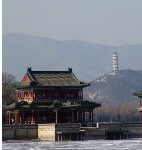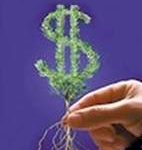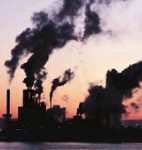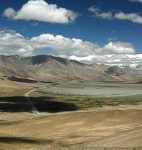The last two hundred years have seen many shocks for China. The world’s biggest economic power at the beginning of the 19th Century, with an economic aggregate at 33% of the world’s total, China quickly declined to only 5% by the mid 20th century. The decline was not arrested until 1950 and industrialisation and modernisation began from a very low economic level. From 1978, China’s economy began to take off, generating the biggest economic miracle in human history and achieving record breaking growth and poverty reduction. Today, China is already the world’s second largest power in terms of comprehensive national power and, according to PPP (purchasing power parity) calculation, is now second only to the United States and predicted by the OECD to overtake the US by 2030, thus becoming the world’s biggest economic power again (See Table 1). For China, national reinvigoration is no longer a dream. The rise of China is a living reality.
The rise of China has aroused great concern throughout the world. Most people in the world hold that China’s development will make a positive contribution. But some also claim that China’s growth is a threat. I think the rise of China will provide the world with opportunities rather than threats and that the whole world will benefit from China’s development. In fact, over the past 20 years, China has already made a tremendous contribution to global growth and poverty reduction. China’s future development will mean a greater contribution still. But the prerequisite is that China’s growth must be grounded in its true national conditions and follow the right development path. I think that China should rise both peacefully and along the path of green development. Only by sticking to a green development strategy and shifting the growth model to a green development path, is it possible for China to realise its historic rise. Table 1 Proportion of China’s GDP in the World’s Total
China’s resources, environment and the loss of natural assets
China abounds in natural resources. But on a per capita basis, it is a resource poor country. According to the World Bank’s 1997 evaluation, among the big countries whose data are available, China’s natural capital was next only to the United States and India. But on a per capita basis, it ranks at only 2670 US dollars, slightly higher than Japan (2300 dollars), 68% that of India, 64% that of Germany, 54% that of Britain, 33% that of France, 16% that of the United States, and 7% that of Australia. China’s agricultural land is 75% of its natural capital, second to India in total value; energy and mineral resources are 16% , with a total value next only to the United States. These two items together form the main part of China’s natural capital. But environmental natural resources are scarce. The value of forest resources, timber, pasture and protected zones in the United States is respectively, 2.7 times, 4.5 times, 5.4 times and 10.8 times that of China. (See Table 2)
China has big natural capital reserves but it is a small country on a per capita basis and the quality of its capital is poor. The contradiction between population and resources has always been significant in China’s productivity and economic development.
Table 2: Natural Capital in Different Countries(1994)
Notes: Total Natural Capital = Natural Capital Per Capita × Total Population
Source: the figure for per capita natural capital comes from Expand the Measure of Wealth: Indicators of Environmentally Sustainable Development (World Bank, 1997); the figure for total population comes from World Development Indicators 2000 CD-ROM
China has already overtaken the United States in industrial and agricultural production to become the world’s largest “manufacturing factory”. As a result of economic reform and opening up, annual industrial added value growth averaged 11.5% in 1978-2004, more than two percentage points higher than GDP growth. If calculated by PPP, China’s industrial added value rose from 4% of the world’s total in 1980 to 22.0% in 2003, overtaking the US (16.5%) to become the world’s number one. China has already become number one in the output of iron and steel, coal, cement, chemical fertiliser and television sets. But industrialisation and urbanisation have put great pressure on water, land, energy, raw materials and other natural resources. The contradiction between population and resources has become even more prominent. China’s resources are lower than the world average per capita, yet its losses in natural resources are the biggest in the world. China is the world’s largest consumer of water (15.4% of the world’s total); China is the world’s leading emitter of water pollution (3 times that of the United States). It ranks second in the world in energy consumption and CO2 discharge and is likely to overtake the United States to become the world’s No. 1. With rapid industrialisation, the demand for natural resources and raw materials has risen rapidly and that will sharpen the contradictions between resources supply and demand even more.
The tensions between population and resources have caused tremendous damage to ecological and environmental systems. China’s ecological environment is deteriorating in its integral functions and its capacity to resist natural adversity is weakening. At the same time, ecological deterioration is growing in scope, dimension and scale of the damage. Despite restoration efforts, the damage continues. When ecological protection is applied to one area, damage is caused elsewhere and the controls are unable to offset the damage. The failing environment can be seen in declining forest quality, grassland degradation, accelerated desertification, soil erosion, serious water loss, worsening of water ecology, vast pollution in agricultural and rural areas, serious food safety problems, alien species invasion, a sharp reduction in biodiversity and the loss of genetic resources. The situation brooks no optimism.
China’s ecological security is threatened. The large scale consumption has also caused grave environmental pollution, most seriously in pollution by rural industries and water and air pollution in cities. In a word, the rapid economic growth has exerted tremendous pressure on the environment and the ecological situation is very grave.
China’s current national economic accounting system, which is based on nominal GDP, has severe flaws: it does not count the cost of natural capital. Instead, it puts the values of overexploited resources and energy, especially non-renewable resources, into the GDP as additional value. This has in fact exaggerated economic income at the expense of rapid consumption of natural resources and severe deterioration of the environment, and will inevitably lead to a great reduction of real national welfare. It is, therefore, necessary to amend the current national accounting system (Kunte et al, 1998; Hamilton and Clements, 1998).
In 1997, the World Bank put forward the concept and calculation method of genuine domestic savings – a country’s real savings rate – after the depletion of natural resources (especially non-renewable resources) and deduction of the loss caused by environment pollution. The formal model of the genuine savings is given by (Hamilton and Clements, 1999),
G=GNP-C-δK-n(R-g)-σ(e-d)+m.
Here, GNP-C is traditional gross savings, including foreign savings; GNP is gross national product, C is consumption; GNP-C-δK is traditional net savings, δK is the depreciation rate of produced assets; -n(R-g) is resource depletion, S=-(R-g) is resource stocks. S grow by an amount g, are depleted by extraction R and are assumed to be costless to produce, n is net marginal resource rental rate; -σ(e-d) is pollution emission costs, X=-(e-d) is the growth of pollutants accumulated in a stock X where d is the quantity of natural dissipation of the pollution stock, σ is marginal social cost of pollution; m is investment in human capital (current education expenditures), which does not depreciate (and can be considered as a form of disembodied knowledge).
In 2002, the World Bank estimated the natural resources loss in a number of countries since 1970, from which, in China’s case (Table 3), we see that China’s high-speed economic development over the past 20 years has been an uninterrupted process of over exploitation of natural assets. The cost not only includes losses due to pollution but also loss and exhaustion of natural, mineral, forest and water resources. Natural resource depletion is measured by the rent of exploiting and procuring natural resources. The rent is the difference of producer’s price (calculated by the international price) and total producer’s costs, including depreciation of fixed capital, and return on capital. Clearly rational exploitation of natural resources is necessary to promote economic growth. However, if the resources rent is too low, it spells over exploitation. If the rent is not reinvested – in human resources, for instance – but goes into consumption, it is “irrational.” Pollution loss mostly refers to CO2 pollution the cost of which, according to Fankhauser (1995) suggested should be calculated at 20 US dollars. This does not include air, water and other pollution. According to the World Bank, 39% of the Middle East’s gross wealth derives from natural capital, mostly oil and natural gas. After taking out natural resources depletion, the genuine savings rates in these countries are all negative (see Table 1).
According to research done by Sachs and Warner at Harvard (1997), ever since the 1970s, the economic growth rate of resource-rich countries has been much lower than that of resource poor ones. The World Bank’s 1997 study shows that countries relying heavily on natural resources suffer greater loss, and the genuine domestic savings rate is low or even negative.
The proportion of China’s loss of natural capital in GDP is shocking. During the early 1970s, the loss accounted for 6-7% of GDP. Between the late 1970s and 1980s, it peaked at 30% of GDP. After that, it began to drop, reaching about 15% in the late 1980s. Economic development in the early days of reform carried a heavy cost in natural resources and the environment. In the 1990s, the loss began to fall decreasing by half, up to 1995, to 7.8%. During the late 1990s, this downward trend was quite distinct, reaching a low of 4.53% in 1998 (See Figure 1). The changing trend of natural capital loss reflects that China has experienced a big turnaround during the past 20 years, for example, from “destruction” to “protection”, from pollution to control, from resources overexploitation to resources replenishment and from tree felling to tree planting.
The genuine domestic savings rate is greatly discounted for the loss of natural resources. It is reflected in the trend of genuine domestic savings rate, which gradually rises after a sharp fall. If natural capital loss is deducted, the net domestic savings rate appears to rise after the 1990s and the two curves tend to converge (see Figure 2). Another point that merits attention is that since the “Tenth Five-Year Plan” period, the real domestic savings rate has assumed a downward trend, due to the falling rate of net domestic savings, the exhaustion of energy and the rising losses caused by CO2. After green GDP account adjustment, the net natural assets loss rose by 6.3% in 2003. This shows that the quality of economic growth has dropped. This reversal in economic growth model merits our attention.
What merits attention is that every time China’s economy and investment is overheated, it touches off massive demand for domestic and international resources and costs a great deal in resource consumption and in environmental pollution. A similar situation appeared in 1993 and 2003. The problem not only reflects the rise in the proportion of loss of natural assets within GDP but also mirrors the rise of the proportion of total loss of natural assets in the world’s total. China overtook the United States to become the country with the biggest natural asset loss and its proportion of loss in the world’s total reached 38.2% by 1993, although it gradually dropped until it reached a quarter of the world’s total. The 2003 economic aggregate of the United States was less than twice the amount of China’s if calculated by PPP, but the natural assets losses sustained by China were more than double that of the United States. (See Figure 3)



